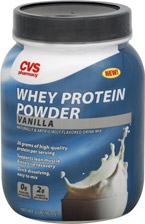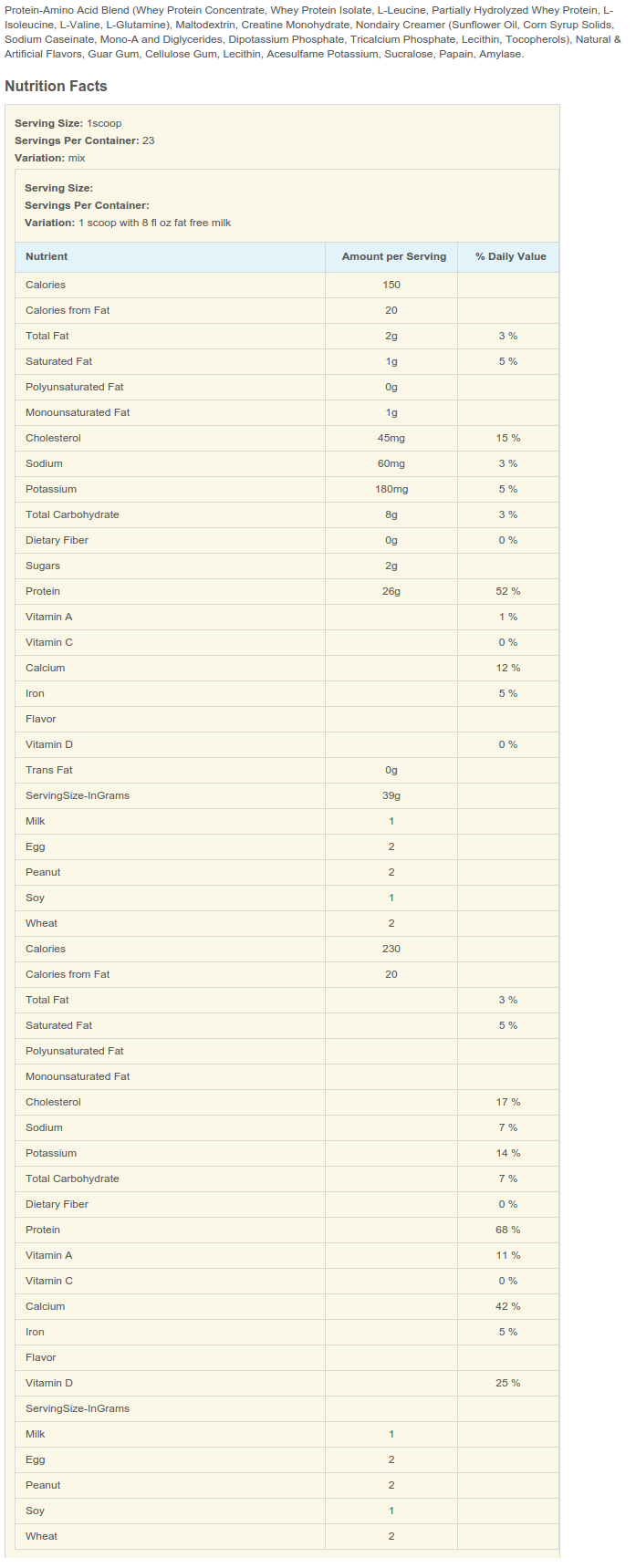Updated March 16, 2016: This case was dismissed and then re-filed. A judge has dismissed CVS' motion to dismiss the refiled case, and the case will move forward. Click here to skip to the 2016 update and read the judge's decision.

A class action complaint was filed against CVS on November 11, 2014 due to this product
Although most of our fans have never bought CVS' Whey Protein, there are thousands out there who have.
If you're one of them, you'll be interested to know that a class action lawsuit has been served to CVS, due to allegedly misleading intent in the marketing and labeling of CVS Whey Protein due to alleged amino acid spiking.
The class action complaint was filed nearly a month ago in the state of Illinois on November 11, 2014, and is publicly available. You can download the full document below:
CVS-Class_Action_Complaint-20141111
CVS Class Action Complaint Main Points
- The product is identified as Whey Protein Powder, and below that, the label states the Product contains “26 grams of high quality protein per serving”.
- The label is not provided in the complaint's PDF. Perhaps it is part of an appendix we do not have. A screenshot is shown to the right and seems to be the right one.
- The legal firm's data findings, from a 39g scoop:
- 21.808g bound amino acids, presumably from the various forms of whey protein
- 0.790g asparagine and 0.294g hydroxyproline (both free form amino acids) were found. Neither of these are on the website's ingredient listing, and are not naturally occurring in whey protein.
- Two creatine tests were performed, the first of which measured 3.060g creatine, the second being 2.250g creatine, for an average of 2.655g creatine.
- Free form L-Leucine, L-Isoleucine, L-Valine, and L-Glutamine were not found by the lab data. All of which are listed on the ingredient facts.
- The plaintiff is Derek Gubala of Illinois, who is represented by Joseph Siprut of Siprut PC; Nick Suciu of Barbat, Mansour, & Suciu PLLC; and E. Powell Miller of The Miller Law Firm.
Interestingly, the total sum of "nitrogen-based amino acids" is then roughly 25.142g, which is technically within spec of the 26g protein, according to the FDAs loose definition of the word "protein". This depends on how you want to define creatine and protein, of course, and is discussed in detail on our protein amino acid spiking page.
Note: Since the ingredient label was not provided by the legal team's PDF, we've attached a screenshot of the CVS whey protein ingredients listing (shown above), obtained from their website. Note that this label was obtained three weeks after the lawsuit was served, so it may have been changed. However, it seems to be the same.
Disclaimer - Not all facts are in
As a disclaimer, realize that these are merely allegations, and nothing has been proven in a court of law. We are still yet to see a proven chain of custody that shows there was no tampering of the product between the manufacturer and the testing lab.
Updates will be kept on our educational post about amino acid spiking and how to avoid it.
March 2016 Update: Refiled Case NOT Dismissed!
After one case dismissal and one refiling by the plaintiff, a judge has stated that this case will not be dismissed.
You can read an article about it here. It seems that this case will be moving forward.
You can read the judge's decision / opinion below:
You'll gain respect for any judge after reading this. Not only do they need to understand and interpret the historical cases, but they must learn exactly what's going on with each case's specifics - in this case, amino acids and protein supplements.
We'll continue to keep this post up to date.



Comments and Discussion (Powered by the PricePlow Forum)